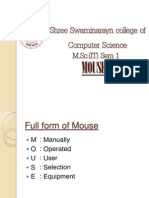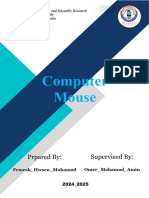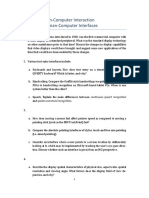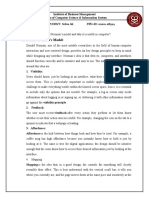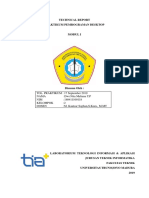0% found this document useful (0 votes)
29 views3 pagesPC Mouse
The PC mouse is a crucial input device that has evolved from its invention in the 1960s to include various types such as optical, laser, and wireless mice. It features components like buttons and scroll wheels, and is used for everyday computing, gaming, and graphic design. Despite its advantages in precision and efficiency, it has limitations such as space requirements and alternatives like touchpads and trackballs.
Uploaded by
aco35966Copyright
© © All Rights Reserved
We take content rights seriously. If you suspect this is your content, claim it here.
Available Formats
Download as DOCX, PDF, TXT or read online on Scribd
0% found this document useful (0 votes)
29 views3 pagesPC Mouse
The PC mouse is a crucial input device that has evolved from its invention in the 1960s to include various types such as optical, laser, and wireless mice. It features components like buttons and scroll wheels, and is used for everyday computing, gaming, and graphic design. Despite its advantages in precision and efficiency, it has limitations such as space requirements and alternatives like touchpads and trackballs.
Uploaded by
aco35966Copyright
© © All Rights Reserved
We take content rights seriously. If you suspect this is your content, claim it here.
Available Formats
Download as DOCX, PDF, TXT or read online on Scribd
/ 3



















